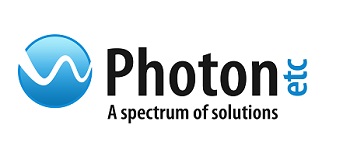The most commonly used analysis of biological samples containing nanomaterials, that significantly scatter light, is dark field illumination. It is also an exceptional tool to identify the location and composition of nanomaterials embedded in cells when combined with hyperspectral imaging. A highly efficient dark field condenser can be added to Photon etc.’s hyperspectral imager, IMA™, to generate high contrast images of biological samples.
.png)
Figure 1. Dark field image of human breast cancer cells tagged with gold nano particles (60 nm size).
Photon etc.’s hyperspectral filter’s high throughput gives quick access to high resolution spectrally resolved images. The whole area in the field of view is captured by the camera, so it is possible to gather spatial and spectral details in real time, with the ability to record spectrally resolved videos to follow the dynamics of cells and luminescent nanoscale components.
PHySpec™ Software
In order to identify the smallest variations of single and aggregated nanoparticles, PHySpec™, Photon etc's software facilitates principal component analysis (PCA).
A sample of MDA-MB-23 human breast cancer cells has been tagged with 60 nm gold nanoparticles (GNPs) and exposed to a dark field illumination on the entire field of view, with the purpose of demonstrating the capabilities of IMA™ to analyze nanomaterials in biological systems, (Figure 1).
An area of 150x112 μm2 was imaged, with a 60X objective, an exposition time of 2 s per wavelength and a step of 2 nm. It only took a few minutes for a complete analysis of over a million spectra, all them covering the whole visible spectrum.
Figure 2 shows the 550 nm image taken from the dark field hyperspectral cube of the breast cancer. GNPs show a sharp peak at approximately 550 nm, whereas cells typically have a flat scattering spectrum. After PCA software processing, the GNPs are marked with a green coloring.
.png)
Figure 2. Manochromatic image at 550 nm. GNPs marked in green after PCA.
Inspecting Nanoparticles in Cancer Cells
The magnification of a breast cancer cell (Figure 3a) and the spectra of the regions containing GNPs (some examples in Figure 3b) confirmed the presence of single 60 nm NPs (peak at 550 nm) and their aggregates (peaks red-shifted). No GNPs were detected by the hyperspectral camera in the areas between the cells.
.png)
Figure 3. Magnnification of breast cancer cell (a) and spectra of GNPs in different areas (b).
Results kindly provided by: David Rioux, Éric Bergeron and Michel Meunier, at École Polytechnique of Montreal, Quebec, Canada.

This information has been sourced, reviewed and adapted from materials provided by Photon etc.
For more information on this source, please visit Photon etc.